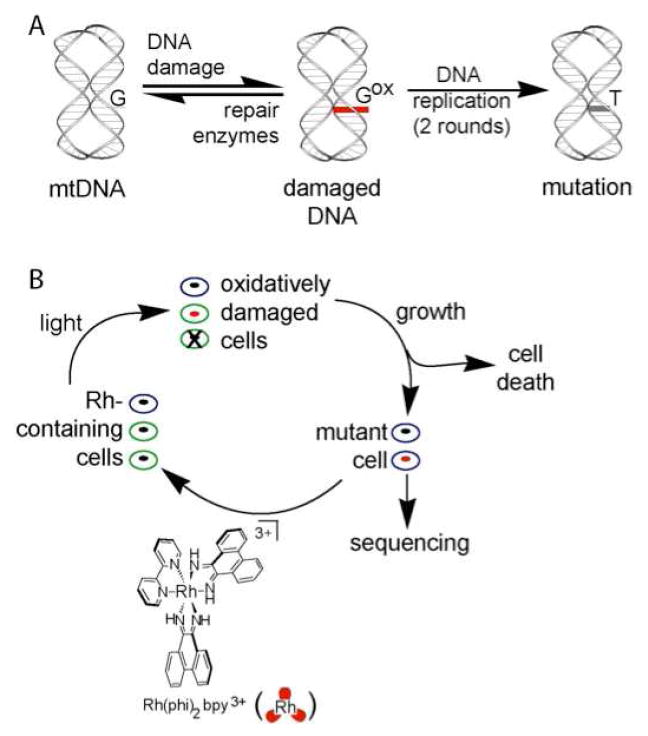Figure 1.

Strategy for inducing mutations in HeLa cell mitochondria. (A) Mitochondrial DNA under elevated oxidative stress yields some oxidative damage to the mitochondrial genomes (red). If unrepaired, modification of a dG leads to a mutation, here a dG to dT conversion. (B) In this study HeLa cells are incubated with [Rh(phi)2bpy]3+ (bottom), a non-specific DNA intercalator that, upon irradiation, induces DNA oxidative damage. Cells are either unmodified (blue), modified (green and red), or dead (x on cell) after exposure to Rh and light. After growing the cells, mutations can arise in the modified cells. Several cycles of oxidative damage and regrowth lead to the accumulation of mutations that can be identified by sequencing.
